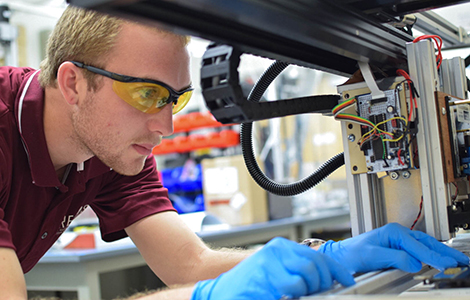
An interdisciplinary team of researchers at Virginia Tech’s Macromolecules Innovation Institute (MII) have developed a new process to 3D print one of the most-desired materials in the electronics and aerospace industries.
Kapton was previously available only in thin 2D sheets and is known as the basis for the “gold foil” that wraps around satellites to insulate them.
A polyimide with exceptional thermal and electrical properties, Kapton has a degradation temperature of around 550°C, doesn’t dissolve in solvents, acts as an electrical insulator, and is resistant to ultraviolet irradiation.
Additionally, because the molecule is all-aromatic, containing rings that restrict rotation, Kapton is also very stable.
“It’s one of these molecules that is the ultimate in terms of performance,” said Timothy Long, a professor of chemistry, the director of MII, and one of the researchers in the study.
Last year, Long and other collaborators in the College of Science and the College of Engineering discovered a path to 3D printing Kapton for the first time using Stereolithography (SLA), but they have since coined a new way, Direct Ink Write (DIW), which allows greater flexibility in incorporating Kapton into manufacturing processes.
“If you think of caulking a bathtub or decorating a cake with icing, (DIW is) a very similar process,” said Daniel Rau, one of the co-authors and a Ph.D. student in the DREAMS Lab.
“Because it’s so simple, (DIW) gives us incredible flexibility on the ink, synthesis, and the properties it has.”
Even after 3D-printing the material via the DIW process, the report shows that subsequent parts had similar properties to the commercially available Kapton film. The DIW material has similar mechanical properties up to 400 °C, and its degradation temperature is 534 °C, only slightly lower than the commercial Kapton that degrades at 550 °C.
While the SLA process is better suited for 3D printing entire objects, DIW is better for printing multiple materials side-by-side, Rau said. The new process allows them to print Kapton directly onto an existing material and curved surfaces, which SLA cannot do.






